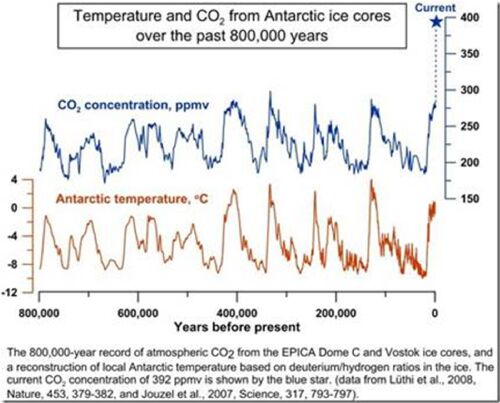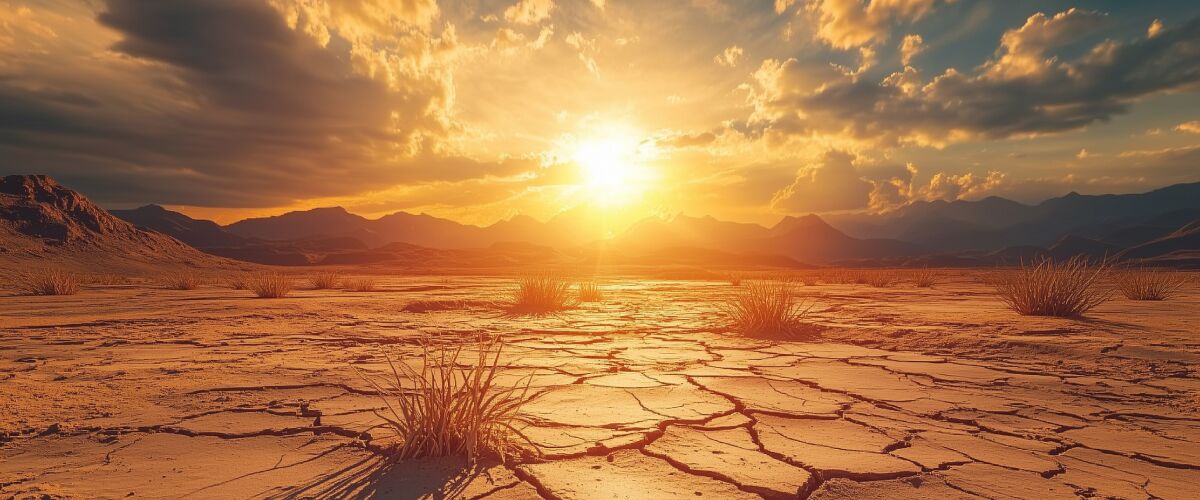Harnessing the Free Market: A Better Way to Combat Climate Change
Our planet’s climate has been changing for billions of years. It will continue to do so for billions more. Eventually, the sun will become a “Red Giant,” consuming the inner planets in the solar system, including Earth.
Planet Earth formed roughly 4.5 billion years ago. At its hottest, our world was a ball of molten gas incapable of supporting life. At its coolest, around 700 million years ago, it was quite literally a ball of ice.
Human Impact on Greenhouse Gas Emissions
For billions of years, Earth’s climate has shifted naturally. In recent centuries, however, human activity has become a driving force. Since the industrial revolution began in 1750, carbon dioxide (CO2) levels have surged from 280 parts per million (ppm) to over 400 ppm today. This marks the highest atmospheric concentration in over 800,000 years. Indeed, the atmospheric CO2 concentration is at the highest level in more than 800,000 years.
Free Wealth Protection Insights
Enter your email below to receive our weekly briefings on better ways to preserve your wealth, legally reduce your tax bill, and better protect what you’ve worked hard to build.
The Nestmann Group does not sell, rent or otherwise share your private details with third parties. Learn more about our privacy policy here.
PLEASE NOTE: This e-series will be delivered to you via email. You should receive your first message minutes after joining us. By signing up for this course, you’ll also start to receive our popular weekly publication, Nestmann’s Notes. If you don’t want to receive that, simply email or click the unsubscribe link found in every message.
The cause of the rapid increase in CO2 over the last two centuries is a subject of ongoing debate. However, the scientific consensus is that much of it is due to human activity. Intuitively, this makes sense because the CO2 spike started to develop in 1750, near the beginning of the Industrial Revolution.
The Relationship Between CO2 and Temperature

A close examination of this graph reveals that every time global temperatures fell sharply, CO2 concentrations were near peak levels. High CO2 concentrations weren’t enough to prevent rapid global cooling.
Global temperatures have fluctuated throughout history. However, the current scientific consensus is that rising CO2 levels, largely due to human activity, will lead to long-term warming. Historical data does show instances where cooling followed high CO2 concentrations. These cooling periods were influenced by other factors, such as volcanic eruptions or changes in Earth’s orbit. Today, without such large-scale natural disruptions, the evidence overwhelmingly points to continued warming as CO2 levels increase.
Unfortunately, small increases in temperature can be hard to measure over short periods because they can be masked by natural variation. As well, other factors can influence global temperatures, such as variations in solar output and the Earth’s orbit
Still, the five warmest years on our planet since reliable records started being made around 1880 have occurred in the last five years – 2015-2019. Nineteen of the last 20 hottest years have occurred since 2000.
Scientists predict that global sea levels could rise by up to three feet by 2100, based on the apparent correlation between atmospheric CO2 concentrations and global temperatures. This rise will intensify the damaging effects of high tides and storm surges in coastal areas. As a result, many of the world’s largest cities could face nearly continuous flooding.
Factors That Could Reverse Climate Change
Several factors could slow or reverse climate change. These include:
- A natural or man-made event throwing enough particulate debris into the atmosphere to slow or reverse atmospheric warming, at least temporarily. This could include a volcanic eruption, a large meteor strike, or even a thermonuclear war.
- A global economic collapse leading to a dramatic reduction in greenhouse gas emissions, thereby slowing or even reversing global warming.
- The world is uniting to de-industrialize and end the consumption of fossil fuels, virtually halting man-made greenhouse gas emissions, but also leading to potentially catastrophic conditions for billions of humans cut off from reliable supplies of food, fuel, etc.
Harnessing the Free Market to Combat Climate Change
Fortunately, these disaster scenarios are not necessary to fight climate change. Governments simply need to unleash the free market to encourage individuals and businesses to reduce greenhouse gas emissions.
Mainstream discussions of climate change inevitably blame free markets for failing to address the issue. Under this logic, the free market has failed because individuals acting in their own interest lack incentives to do what’s best for society. As a result, all mainstream proposals to address climate change call for greater centralized planning. This approach involves “fixing” the free market by transferring decisions about how to combat climate change to governments.
There’s also the uncomfortable fact that climate change has human victims, and most of them are poor. Coastal populations in Southeast Asia are especially vulnerable to rising sea levels, for instance.
However, while it’s ethically impossible to ignore the human dimension, do you or anyone else have the “right” to particular climatic conditions?
I think not. If rising sea levels force you to move inland, it’s unfortunate, but it also isn’t a violation of your rights.
It would be different if I built a dam that flooded your neighborhood, forcing you to flee. In that case, you’ve been wronged, and I should pay you compensation.
Property Rights and Market Incentives: The Case of Deforestation
Fortunately, there are many ways the free market can be harnessed to combat climate change. These approaches do not rely on the assumption that anyone has the right to a climate they consider more desirable.
Critics argue that free markets can’t solve climate change, claiming individuals lack the incentive to act for the common good. Yet history shows that when property rights and market incentives align, positive environmental outcomes are possible. For instance, in the United States, private landowners have incentives to maintain forests, ensuring profits from timber without depleting resources. Expanding such incentives globally could curb deforestation, one of the primary contributors to greenhouse gas emissions.
The Cost of Fossil Fuel Subsidies
Another way Americans can fight climate change is to eliminate the enormous subsidies the federal government pays to the fossil fuel industry. Despite the increasing affordability of renewable energy, the US government continues to subsidize the fossil fuel industry, costing taxpayers over $20 billion annually. These subsidies, initially designed to encourage energy security and economic growth, are now obsolete in a world where renewable sources like wind and solar power are both more cost-effective and environmentally sustainable. By eliminating these outdated incentives, governments could level the playing field for renewable energy, allowing the market to naturally shift towards cleaner alternatives.
These subsidies are especially unjustified now that renewable energy sources like wind and solar are already the least expensive forms of power generation in two-thirds of the world, including large parts of the US. And prices for these technologies continue to fall fast. Indeed, the price of solar-generated electricity is predicted to drop another 40% in 2020. As well, the cost of storing energy produced by renewables in batteries has fallen by nearly 90% since 2010.
Nuclear Power: A Clean Energy Solution
When large-scale energy production is required in an industrial or urban area, it’s hard to beat nuclear power, which doesn’t produce greenhouse gases. The latest generation of nuclear reactors, developed by energy entrepreneurs, is 1/100 the size of current models. These reactors can be installed in clusters near factories and cities, rather than being located miles away. Because they’re so small, they’re much easier to encase securely. They also can’t melt down.
Thus, even though climate change may be an existential threat to humanity, solutions are available that don’t require massive top-to-bottom market interventions. Market-driven technologies like nuclear power and renewables continue to show their viability as part of a sustainable energy future.
Radical Proposals and Their Consequences
Proposals like zero net greenhouse emissions by 2025 would require a radical shift back to a pre-industrial existence. In this scenario, there would be no vehicles (although electric cars and trucks might be okay if they’re charged with renewable energy). No air travel. No heating or cooling of our homes or offices with fossil fuels. No manufacturing of any product requiring fossil fuel use. No new construction. Such extreme measures would likely lead to massive economic and societal collapse.
The result would be a total collapse of the global economy. Some of us would survive if we had the skills our great-grandparents had, but even they used fossil fuels – primarily wood – to heat their homes. Without those skills, which have largely been lost, the extreme solutions would lead to billions of human deaths.
While well-intentioned, these proposals are impractical due to the immense disruption they would cause to modern economies and human livelihoods. So while ideas like net-zero 2025 might slow rising sea levels in theory, they’ll never become a reality.
A Practical Path Forward
Instead, we’ll muddle through. Humans won’t become extinct, at least not from climate change alone. Rather than imposing top-down demands that drastically reduce our standard of living, we should focus on market-driven solutions that protect both the environment and human progress. By eliminating harmful subsidies, supporting property rights, and incentivizing innovation, we can combat climate change while preserving the benefits of modern life.













